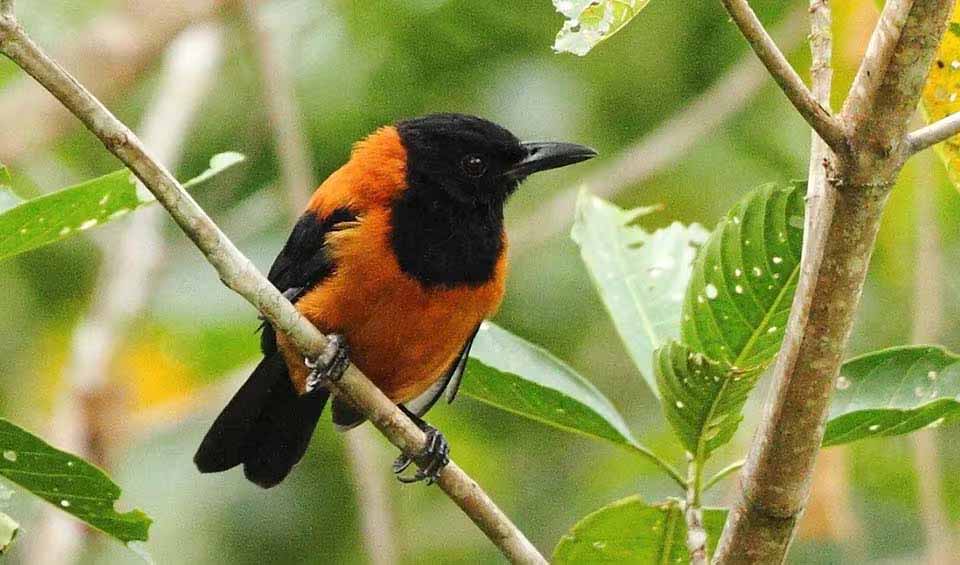A fascinating and enigmatic bird species that inhabit the dense forests of New Guinea, including the ISL of Yapen. Its medium-sized stature and striking chestnut-colored plumage, contrasted by jet-black head, tail, and wings, make it a visually captivating sight amidst the lush greenery of its habitat. While it prefers the shelter of thick forests, it can also be occasionally found in secondary growth areas and even mangrove forests.
One of the most intriguing aspects of the Hooded pitohui is its diet and behavior. This social bird is often observed feeding in family groups or with friends, foraging primarily on a varied diet of fruits, grass seeds, and insects. The cooperative nature of these birds extends to their breeding behavior, with family groups playing a significant role in raising young nestlings. This collaborative effort involves providing protection and food for the vulnerable offspring, ensuring their survival in the challenging forest environment.
However, what truly sets the Hooded pitohui apart from other birds is its remarkable adaptation to its environment. The toxicity of this bird was known to the indigenous peoples of New Guinea from ancient times, but it wasn’t until later scientific discovery that the true extent of its toxicity was understood. The Hooded pitohui is one of the few known birds to possess potent toxins in its skin and feathers, making it a formidable deterrent against predators. In a fascinating example of Müllerian mimicry, other unrelated species have evolved to mimic the pitohui’s plumage, leveraging its toxicity for their own protection.
Distribution
 Indonesia
Indonesia Papua New Guinea
Papua New GuineaDid you know?
- The toxicity function in this species is debatable among scientists.
- The name originates from the musical whistle of the bird, which sounds like pi-too-hui or pit-oo-eey.
- Young, when threatened in the nest, display the warning signals as toxic species do, but they are not even poisonous at that age.
Anything we've missed?
Help us improve this page by suggesting edits. Glory never dies!
Suggest an editGet to know me
Terrestrial / Aquatic
Altricial / Precocial
Polygamous / Monogamous
Dimorphic (size) / Monomorphic
Active: Diurnal / Nocturnal
Social behavior: Solitary / Pack / Herd / Flock
Diet: Carnivore / Herbivore / Omnivore / Piscivorous / Insectivore
Migratory: Yes / No
Domesticated: Yes / No
Dangerous: Yes / No





